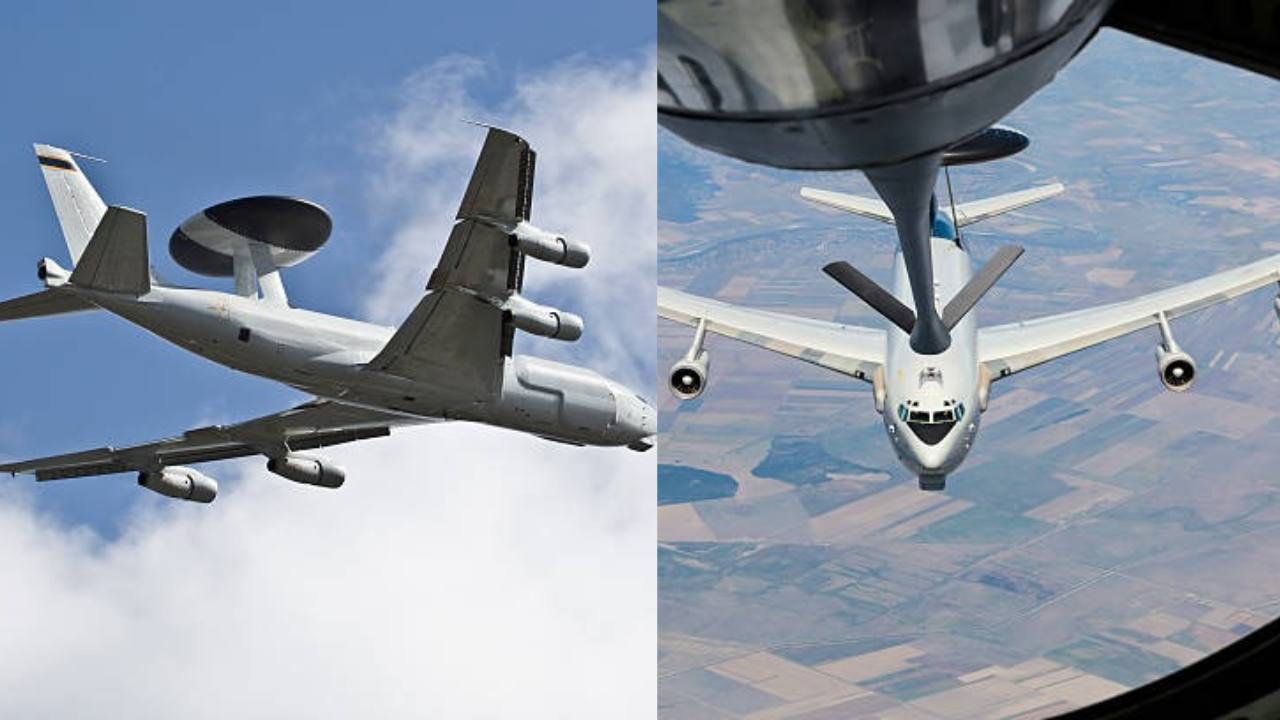Trending:
India Shoots Down Pakistani AWACS: What Are These 'Eyes in the Sky'
India has reportedly shot down a Pakistani Air Force AWACS aircraft during a counterstrike following a missile and drone attack from Pakistan on Indian cities. The Indian military successfully thwarted these attacks, which targeted locations in Jammu and Kashmir.

AWACS stands for Airborne Warning and Control System — a highly sophisticated radar surveillance and battle management system mounted on a specially equipped aircraft
India reportedly shot down a Pakistani Air Force AWACS (Airborne Warning and Control System) aircraft operating inside Pakistan’s Punjab province in its counterstrike against the Islamabad offensive late on Thursday night. Pakistan launched a drone and missile attack on multiple Indian cities on the evening of May 8, less than 24 hours after it failed to attack Indian military locations. Pakistan's attempt to hit military stations in Jammu, Pathankot, Udhampur, and some other locations with missiles and drones late on Friday was thwarted by the Indian forces.
Sirens and numerous explosions were reported in Akhnoor, Samba, Baramulla and Kupwara and several other places as the Indian military carried out a massive night aerial vigil along the border with Pakistan.
After the Indian military foiled the Pakistani attempts, the defence ministry said India remains "fully prepared to defend its sovereignty and ensure the safety of its people".
"Military stations at Jammu, Pathankot and Udhampur were targeted by Pakistani-origin drones and missiles along the International Border in Jammu and Kashmir today," a defence ministry spokesperson said.
"The threats were swiftly neutralised using kinetic and non-kinetic capabilities in line with established standard operating procedures (SOPs)," he said.
With the reported downing of one of Pakistan’s most advanced surveillance aircraft, questions around AWACS systems are doing rounds with many questioning the efficiency and impact the aircraft.
What Exactly Is AWACS?
AWACS stands for Airborne Warning and Control System — a highly sophisticated radar surveillance and battle management system mounted on a specially equipped aircraft. Easily recognizable by the large, rotating radar dome on top of the fuselage, an AWACS serves as an airborne command center that can detect and track aerial threats over long distances.
Unlike ground-based radars, which are limited by the Earth’s curvature, AWACS aircraft can monitor threats across hundreds of kilometers in all directions. Their airborne vantage point allows them to provide a real-time overview of airspace activity, making them critical to modern air defense operations.
Why Are AWACS Important?
AWACS platforms serve as a force multiplier in any combat environment. Their primary functions include:
- Early detection of enemy aircraft and missiles far beyond the range of ground-based radars
- Command and control over friendly aircraft in real time
- Target tracking across vast airspace and even maritime zones
- Secure communication, resistant to interception or jamming
These aircraft are especially valuable in coordinating air missions, guiding fighter jets to intercept threats, and monitoring fast-changing battlefield scenarios.
How Do AWACS Work?
The radar system is typically mounted on a turntable inside a dome (called a rotodome) positioned on top of the aircraft. For example, the U.S.-made E-3 Sentry AWACS has a 30-foot-wide radar dish capable of detecting:
- Low-flying aircraft up to 370 km (200 nautical miles) away
- High-altitude aircraft at even greater ranges
- Maritime activity, regardless of terrain or weather
An onboard computer processes this data, helping commanders assess threats and make tactical decisions quickly.
How Many AWACS Does Pakistan Have?
As of 2025, Pakistan operates a total of nine AWACS aircraft. Here's a breakdown:
- 4 Saab-2000 Erieye (Sweden) — Delivered between 2006 and 2020
- 4 ZDK-03 Karakoram Eagle (China) — Delivered in 2008 but retired in 2024
- 1 additional Erieye — Acquired later to replace earlier losses
With the Chinese ZDK-03 fleet no longer in service, Pakistan's present AWACS fleet stands at five Erieye aircraft.
Why This Matters
AWACS are considered among the most valuable strategic assets in any air force’s arsenal. The reported destruction of one such aircraft not only signals a major tactical blow to Pakistan but also reflects the serious escalation in the Indo-Pak conflict following Operation Sindoor.
As tensions continue to rise, the role of high-tech systems like AWACS in modern warfare is becoming ever more apparent—and central to the battle for air superiority.
Get Latest News Live on Times Now along with Breaking News and Top Headlines from India and around the world.

Anurag Kumar author
A world of stories and music is where Anurag lives. Be it political, historical or thriller, he is someone who loves to listen to everyone's narrative...View More
End of Article
Subscribe to our daily Newsletter!






Pakistan Shot Down IAF's Sukhoi SU-30MKI And Captured Indian Pilot? No. Here's The Truth

Why Are Red Crosses Being Painted On Rooftops Of Hospitals Across India Amid Tensions With Pakistan?

Explosion At Jammu Air Force Base? Centre Fact-Checks Viral Claim

Cash Row: CJI Recommends Impeachment of Justice Yashwant Varma, Say Sources

Object Suspected to be Pakistan's Missile Debris Found in Jaisalmer's Kishanghat | Watch Video













